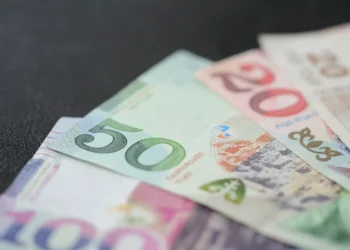ISET-PI has updated its real GDP growth forecast for the fourth quarter of 2022 and the first quarter of 2023. Here are the highlights of this month’s release:
• According to Geostat’s updated estimate, Q3 2022 growth rate stands at 9.7%. As a result, the real GDP growth estimate for the first nine months of 2022 is 10.2%.
• As a result of the update, ISET-PI growth forecast for Q4 of 2022 was changed to 11.9%. ISET-PI’s first forecast for Q1 of 2023 puts GDP growth at 3.9%.
• Based on September’s data, we expect annual growth in 2022 to be 10.8%. Historically, our model’s forecast based on September data is rather accurate, but this year the number is most likely slightly overestimated. This is because the current shock (the war, sanctions and large-scale in-migration) had not had relevant analogues in the Georgian data in the past.
• In addition, the National Bank of Georgia revised its expectation for the real GDP growth up from 9% to 10% in 2022 (very close to our current annual forecast). According to the Monetary Policy Report (4th edition), among the reasons behind the upward revision is the stronger-than-expected impact of increased migration to Georgia from regional countries and significantly increased revenues from exports of services (mainly from tourism). However, in the future, when the political situation stabilizes in a region, a similar growth of foreign inflows is unlikely. The real GDP growth forecast for 2023 is around 4% (revised down from 4.5% based on the 3rd edition of the Monetary Policy Report).

Merchandise Trade
In September, Georgia’s exports experienced an 40.0% annual growth. This was mainly driven by increased export/re-export of motor cars (increased by 122% YoY, which is 14.7 ppts), copper ores and concentrates (increased by 29% YoY, 4.2 ppts), ferro-alloys (increased by 18% YoY, 2.4 ppts), cigars, cheroots, cigarillos and cigarettes (increased by 385% YoY, 2.1 ppts), and electrical energy (increased by 212 times, 2.1 ppts). In contrast, exports of hazelnuts and other nuts (decreased by 47% YoY, -3.1 ppts), and Telephone sets, including telephones for cellular networks or for other wireless networks experienced annual decline (decreased by 70% YoY, -0.8 ppts). It is notable that dramatic increase of the goods export is mainly a reflection of higher prices, as the volume of exports increased more modestly, by 21.1% yearly.
During this period, the import of goods increased by 13.8%, driven by an increased import/re-import of petroleum (mostly driven by higher prices), petroleum gases, coke-bitumen and wheat flour. In contrast, imports of copper ores and concentrates experienced an annual decline. In the same time, the volume of imports decreased by 1.5% yearly. Consequently, the trade deficit shrank by 3.1% yearly (it is the first time in 2022 that the deficit of the merchandise trade experienced an annual decline. While the deficit has been widening on average by 39% in January-August 2022), and amounted to 561.1 million USD. Overall, trade related variables still had a notable positive contribution to the GDP growth forecast.
Remittances
In September, remittances increased by 84.6% annually and reached 387.2 million USD. The main contributors to this increase were Russian Federation (contributing to over half of the overall growth, 64.5 ppts), Kyrgyzstan (7.0 ppts), Armenia (3.7 ppts), Belarus (3.0 ppts), Germany (2.4 ppts), Kazakhstan (2.0 ppts), USA (2.0 ppts), Tajikistan (1.4 ppts), Italy (1.1 ppts), UK (1.0 ppt), and Uzbekistan (1.0 ppt). Whereas money inflows decreased from Ukraine (3.8 ppts), Azerbaijan (1.6 ppts), Greece (0.7 ppts), and Moldova (0.3 ppts). Overall, the significant increase in remittances flows made a positive contribution to the growth forecast.
Tourism
Tourism arrivals and receipts notably recovered in September of 2022 after a sharp decline in 2020 and a recovery process in 2021. In September, the number of international visitors increased by 147% yearly, while the increase in tourist numbers (visitors who spent 24 hours or more in Georgia) amounted to 116.7%. Overall, recovering numbers of visitors and tourists, along with an increase in touristic spending has made a positive contribution to the growth forecast.
Real Effective Exchange Rate (REER)
REER depreciated by 2.1% monthly and appreciated by 18.3% yearly in September. Moreover, the GEL/EUR, GEL/USD, and GEL/TRY real exchange rate appreciated (except GEL/RUB, which depreciated by 11.7%) compared to the same month of the previous year by 31.7%, 12.7%, and 42.6% respectively. The Lari Real Exchange Rate (RER) depreciated in monthly terms with respect to the currencies of the major partner countries – Euro (EUR) (by 1.0%), Russian Ruble (RUB) (by 2.9%), Turkish Lira (TRY) (by 3.4%) and US Dollar (USD) (by 2.0%). Overall, REER-related variables had a small negative contribution to the real GDP growth projections.
World Prices
The other variables of interest in our growth forecast were Metals Price Index (PMETA) and the Agricultural Raw Materials Index (PRAWM). Metals form a significant share in Georgia’s exports, while food and oil are among the main imports. Therefore, a global increase in the price of metal will likely cause improvement to the Georgian economy, whereas an increase in the price of agricultural products will be damaging. In annual terms, metal prices as well as agricultural raw material prices decreased by 16.3% and 10.8% respectively in September. On the balance, adding the PMETA and PRAWM indicators to the model thus decrease the growth forecast for both quarters.
Inflation
In September, the annual inflation of consumer prices amounted to 11.5%, which is notably higher than the targeted 3%. Approximately 5.1 percentage points of CPI inflation were related to higher food prices (this was driven by the hike in food prices worldwide – FAO Food Price Index increased by 5.2% yearly1). Furthermore, increased fuel prices made a notable positive contribution (1.1 ppts) to the annual inflation measure. The latter trend is mostly a reflection of significantly increased oil prices on the global market (Euro Brent Spot Price (COP) increased by 20.5% yearly). There are two factors giving us a reason for optimism on inflation: (1) oil prices started to decrease from their peak earlier in the year and (2) GEL exchange rate appreciated against the currencies of the main trading partners. Meanwhile, the measure of core inflation amounted to 7.5%. Overall, CPI related variables had a slight negative contribution to the GDP forecast.
Consumer Credit
The other group of variables that had an important impact on the GDP growth predictions is related to the consumer credit. In September 2022, the total volume of commercial banks’ consumer credit increased by 30.3% yearly and 1.0% monthly (despite strict monetary policy due to the high inflation). The volume of commercial banks’ short-term and long-term consumer credits increased by 11.2% and 30.9% respectively in annual terms. Only foreign currency short-term consumer credit experienced a notable annual decline of 34.4%. Furthermore, short-term consumer credit decreased by 1.9% monthly, while long-term consumer credit increased by 1.1% compared to the previous month. Overall, the variables related to consumer credit still have had a slight negative impact on the growth forecast.
Our forecasting model is based on the Leading Economic Indicator (LEI) methodology developed by the New Economic School, Moscow, Russia. We have constructed a dynamic model of the Georgian economy, which assumes that all economic variables, including GDP itself, are driven by a small number of factors that can be extracted from the data well before the GDP growth estimates are published. For each quarter, ISET-PI produces five consecutive monthly forecasts (or “vintages”), which increase in precision as time passes. Our first forecast (the 1st vintage) is available around five months before the end of the quarter in question. The last forecast (the 5th vintage) is published in the first month of the next quarter.
By Davit Keshelava and Yaroslava Babych














